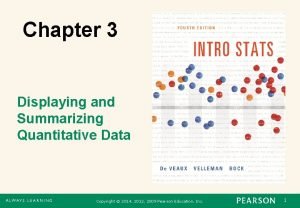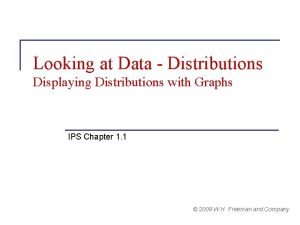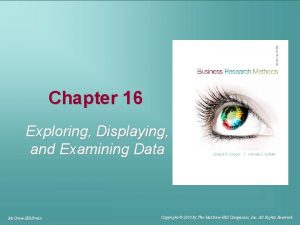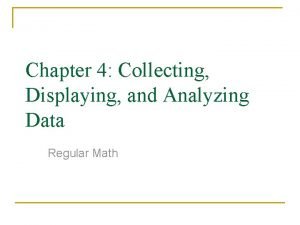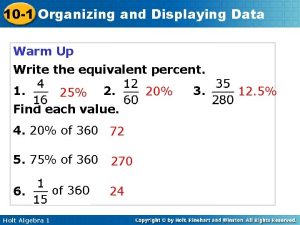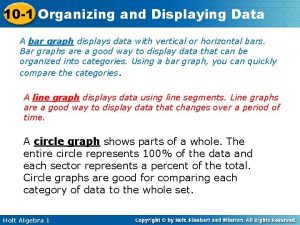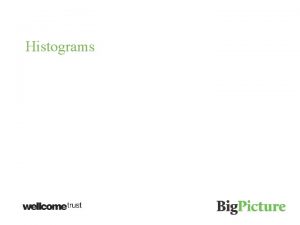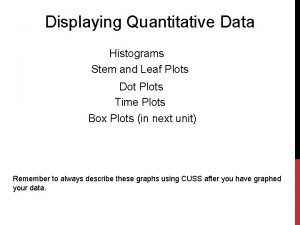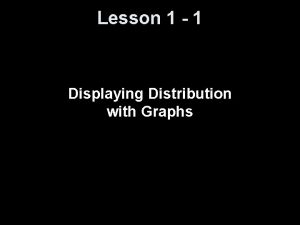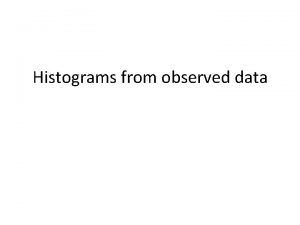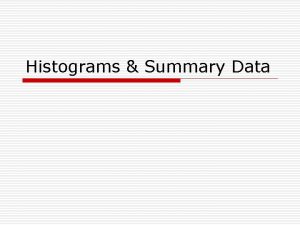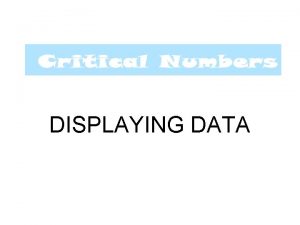1 2 Displaying quantitative data with graphs Histograms











- Slides: 11

1. 2 - Displaying quantitative data with graphs (Histograms)

Histograms The most common graph of quantitative data. Classes: the intervals along the bottom axis. These need to be of equal width Frequency: the count of individuals of a class occurring Relative frequency: the percent of the individuals in a class (this is more useful, especially when you are comparing two sets of data with an unequal total of individuals)

Construct 2 histograms. One displaying the frequency and one displaying the relative frequency. The following table presents the average points scored per game (PTSG) for the 30 NBA teams in the 2009 -2010 regular season. 101. 7 99. 2 95. 3 97. 5 102. 1 102 106. 5 94 108. 8 102. 4 100. 8 95. 7 101. 7 102. 5 96. 5 97. 7 98. 2 92. 4 100. 2 102. 1 101. 5 102. 8 97. 7 110. 2 98. 1 100 101. 4 104. 1 104. 2 96. 2

Steps for constructing a histogram 1 st - divide the range of data into class of equal width. 2 nd - find the count and percent of individuals in each class. 3 rd - label and scale your axes 4 th - draw your histogram

1 st step What is the range of our data? What would be a good class size to choose? What are the classes?

2 nd Step Fill in a frequency table and a relative frequency table. Frequency Table Class Count Relative Frequency Table Class Percent

Relative Frequency 3 rd step PTSG

Relative Frequency 4 th step PTSG

Describe the data of the average points per game in the 2009 -2010 NBA season. Don’t forget your “SOCS!” The data appears to be _______ with a peak of _____. The center of the data occurs around ______ The _____ appear to be any outliers. The histogram shows that the percent of points per games ranged from _____

How does class size effect the shape of the histogram? www. whfreeman. com/tps 4 e

Last Pieces of advice about histograms 1. Don’t confuse histograms and bar graphs Histograms are for quantitative data Bar graphs are for categorical data 2. Don’t use the counts or percents as the data. Use the data to find the counts and percents for your graph. 3. Use percents instead of counts when comparing distributions with different numbers of observations. 4. Just because a graph looks nice, doesn’t mean it’s necessarily a meaningful display of data. (Excel is a terrible tool to use for statistical
 Quantitative data graphs
Quantitative data graphs Displaying quantitative data
Displaying quantitative data Chapter 3 exploring quantitative data answers
Chapter 3 exploring quantitative data answers Displaying distributions with graphs
Displaying distributions with graphs Data preparing exploring examining and displaying
Data preparing exploring examining and displaying Collecting and displaying data
Collecting and displaying data Categorical data displays
Categorical data displays Organizing and displaying data
Organizing and displaying data Displaying data from multiple tables
Displaying data from multiple tables Organizing and displaying data
Organizing and displaying data Good and bad state graphs in software testing
Good and bad state graphs in software testing Speed and velocity
Speed and velocity


